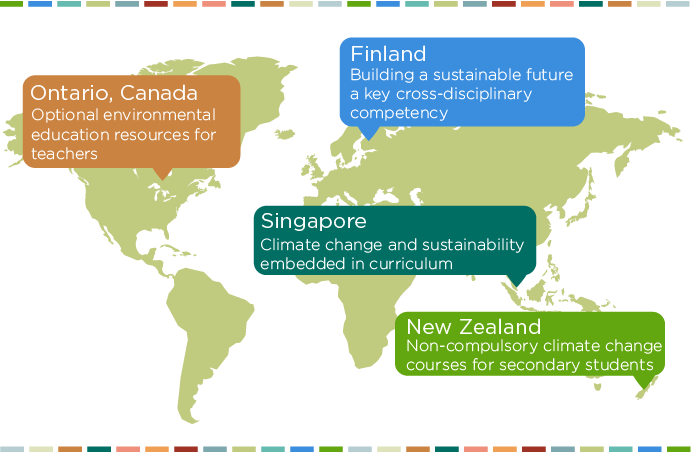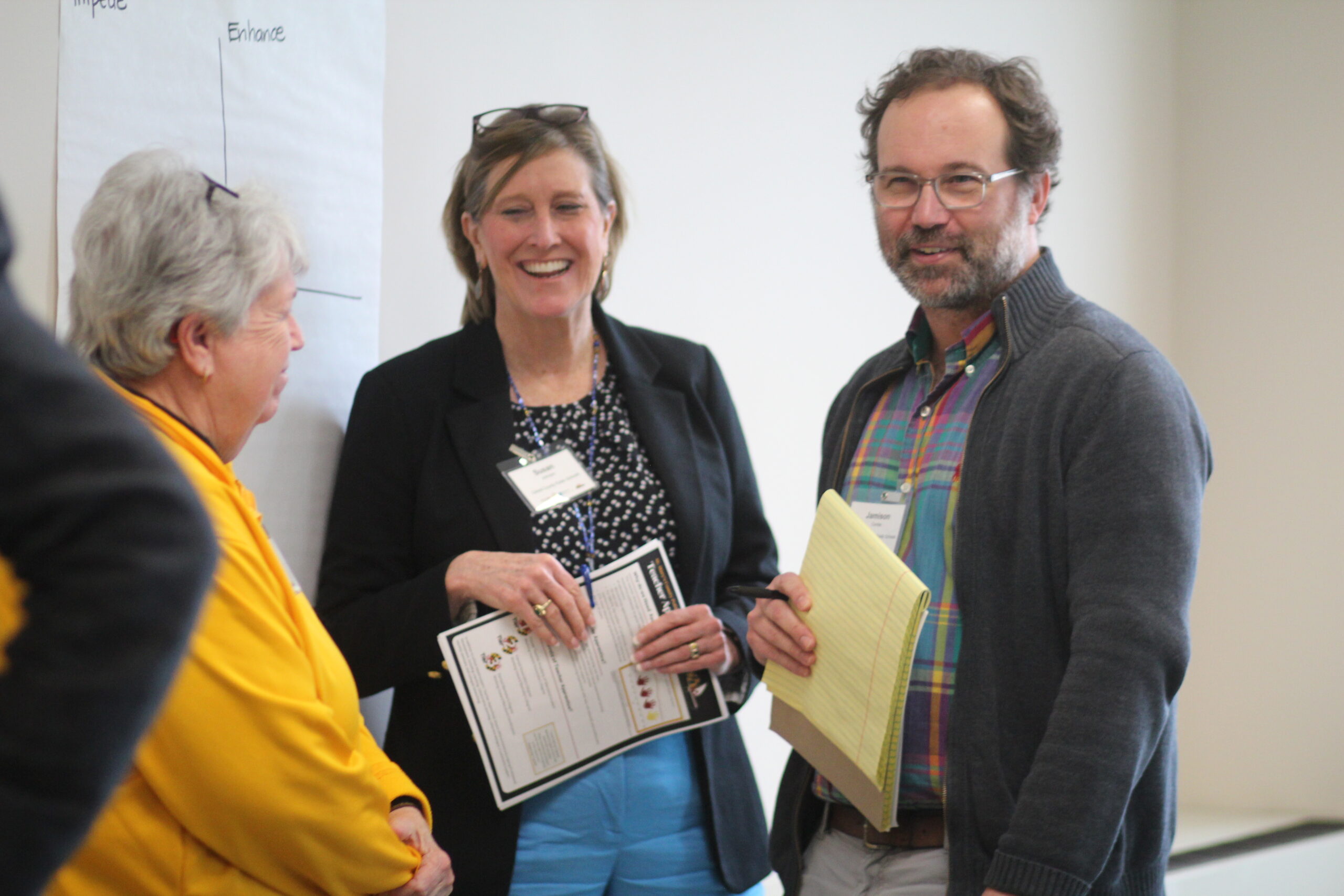
By Gretchen Cheney
As awareness of the global climate crisis grows, jurisdictions around the world are taking steps to infuse environmental awareness and sustainability into their school curricula to help future generations be more environmentally responsible. For more than ten years now, the Canadian province of Ontario has provided curriculum maps to school boards and schools for K-12 teachers who are interested in incorporating environmental education lessons into their classes. In Finland’s national core curriculum for basic school, one of the seven transversal skills students are expected to learn is “participation, involvement and building a sustainable future.” Last year, New Zealand developed an optional climate change course that teaches students ages 11-15 how to take action on environmental issues to help students feel empowered and reduce “eco-anxiety.” Singapore had already embedded climate change in its national curriculum and recently announced a new effort to bring additional focus to the topic of sustainability in both the primary social studies curriculum and specific secondary science and geography courses. These curricular changes are part of a broader national initiative to strengthen sustainability efforts in schools. To read more about how the curriculum is organized in top-performing jurisdictions, see NCEE’s Top-Performing Country Profiles.




